Sosu Museum (소수박물관)
12.4 Km 10781 2021-03-11
2780, Sobaek-ro, Yeongju-si, Gyeongsangbuk-do
+82-54-639-7691
Sosu Museum aims to consolidate and organize the nation’s traditional Confucian legacy and to establish the root of the national spirit through Sosuseowon, the first Confucian academy ever created in Korea. This museum is the only Confucian museum where visitors can experience the very valuable legacy of the Confucian culture and the rise and fall of Confucianism during the Joseon dynasty. The museum opened on September 22, 2004 and since then, it has been a place where one can experience the dynamic historical adventure through valuable Confucian relics and remains. The museum also aims to revitalize the local culture of the Yeongju area by showcasing the region's well-preserved cultural assets and items.
Sunheunghyanggyo Confucian School (순흥향교)
12.4 Km 16293 2020-05-06
15-36, Cheonggu-gil, Yeongju-si, Gyeongsangbuk-do
+82-54-639-6581
Originally built in Geumseong to the north of Sunheungbu administrative district in Yeongju-si, Gyeongsangbuk-do, Sunheunghyanggyo Confucian School moved to Wiya-dong to the east of the district in 1718 and moved once again in 1750 to its current location. Facing southward, this ancient Confucian school is located at the foot of a mountain with river flowing in the foreground. It can be reached by crossing the Jukgye Jaewolgyo Bridge from Geumseongdan Altar and taking the path on the left before turning left at Cheongdari Village Hall to walk a little further up the road. Currently housed within unheunghyanggyo are valuable materials related to Confucian schools.
Sosuseowon Confucian Academy [UNESCO World Heritage] (소수서원 [유네스코 세계문화유산])
12.5 Km 19197 2020-12-04
2740, Sobaek-ro, Yeongju-si, Gyeongsangbuk-do
+82-54-639-7691
Sosuseowon Confucian Academy is situated at the foothills of Sobaeksan Mountain. Sosuseowon was the first to receive a royal charter as a private Confucian academy along with financial support and acknowledgement by the king. This academy was originally founded under the name Baegundongseowon in 1542 by a Confucian scholar Ju Se-bung, who was also the magistrate of Punggi County at the time. Baegundongseowon first started as an academic institution that enshrined a memorial tablet of An Hyang, a Confucian scholar whom Ju Se-bung had deep respect for. After Ju Se-bung left the county, Toegye Yi Hwang, a renowned Confician scholar, became his successor and made an official request to the king to be granted a royal charter. The request was well received, and the king renamed the institution to its current name, Sosuseowon.
Bonghwa Sweetfish Festival (봉화은어축제)
13.0 Km 28434 2023-05-17
Naeseong-ri, Bonghwa-gun, Gyeongsangbuk-do
• 1330 Travel Hotline: +82-2-1330 (Korean, English, Japanese, Chinese) • For more info: +82-54-674-3053
Bonghwa Sweetfish Festival is one of Korea's prime summer festivals and celebrates the local specialty product of sweetfish. The sweetfish from Bonghwa are recorded as having been given as tribute to the king during the Joseon dynasty. The highest-quality sweetfish come from the upstream sections of the Nakdonggang and Seomjingang Rivers, where Bonghwa-gun is located. The festival offers numerous participatory programs including fishing, water play, a water fight, and agricultural experiences. Visitors who participate in fishing activities can feast on their catch.
Chosun Minhwa Museum (조선민화박물관)
13.0 Km 37111 2020-05-15
432-10, Gimsatgat-ro, Yeongwol-gun, Gangwon-do
+82-33-375-6100
Chosun Minhwa Museum finished construction in 1998, in Waseok-ri, Gimsatga-myeon, Yeongwol-gun, Gangwon-do and opened on July 29, 2000. The museum contains about 3,000 folk paintings (minhwa) from the Joseon era and is comprised of a hands-on program hall where visitors can paint a minhwa on a wood plate and the chunhwa (obscene painting) exhibition which is eligible for only adults.
In addition to this museum, Gimsatgat Culture Hall and Indian Art Museum are also in Yeongwol.
Sobaeksan National Park (Gyeongsangbuk-do Region) (소백산국립공원(경북))
13.8 Km 35865 2023-02-17
Punggi-eup, Yeongju-si, Gyeongsangbuk-do
+82-54-638-6196
Sobaeksan National Park was designated as the 18th national park in December 1987. The features of Sobaeksan National Park include wildflowers and royal azaleas in spring and snowy scenery in winter. The mountain borders three provinces and four cities. Attractions include various peaks, temples, and waterfalls. The mountain is especially popular in May when royal azaleas are in full bloom and a natural forest tunnel is formed. Birobong Peak of the mountain is covered with snow six months of the year and is called the Alps of Korea.
Be, Bridge Pool Villa Resort (Selene) [Korea Quality] / 비브릿지(셀레네) [한국관광 품질인증/Korea Quality]
14.6 Km 10 2021-03-29
2295-12, Yeongwoldong-ro, Yeongwol-gun, Gangwon-do
Be, Bridge is a pension-type accommodation with individual pools attached to each of the units. Located in Gimsatgat-myeon, Yeongwol-gun, Gangwon-do, it is nestled comfortably in the nature of Taebaeksan and Sobaeksan National Parks and Okdongcheon Stream. There are 7 Grand Pool Villa units, all 2-story buildings with 2-person occupancy capable of accommodating up to 4-10 guests, depending on their sizes. Units 1, 2, 4, 5 have indoor pools that can be turned into outdoor pools by opening the door, while unit 7 has an indoor pool. The terrace pool in unit 3 and 6 are closed during the winter period. Each unit comes with grilling facilities and a garden, while units 2 to 7 have spa facilities.
Full Moon Stay is a couples-only room located in Welcome Plaza (reception) building. The 1st floor has three two-story rooms with spa facilities, while the 2nd floor has terrace rooms with a river view. Facilities include the rooftop swimming pool, which also offers warm water services, a children’s playground, natural sledding area, walking paths, and valley.
Jukgyegugok Valley (죽계구곡)
14.7 Km 33246 2017-12-22
Jukgye-ro 315beon-gil, Yeongju-si, Gyeongsangbuk-do
Jukgyegugok Valley is the valley stretching from Baejeom-ri to Choamsa Temple.
Joseon-era Confucian scholar Toegye Yi Hwang (1501-1570) was inspired by the
scenery of the valley and the enchanting sound of the flowing water, so he came
up with names for each of the nine sections of the valley and collectively called
them Jukgyegugok (nine bamboo valleys). The valley presents a splendid sight
indeed with crystal clear waters, lush forest, and white rocks. In summer, vacationers
from around the country flock to Jukgyegugok Valley to cool off from the sweltering
heat by dipping their feet in the refreshing waters of the valley. Famous tourist
attractions near the valley include Sosuseowon Confucian Academy, Buseoksa Temple,
and Eupnaeri Mural Tomb.
* Choamsa Temple
On the path that ascends from Jukgyegugok Valley, there is a small temple
located at the foot of Sobaeksan Mountain. The great monk Uisang Daesa of the
Silla Kingdom reached this place during his search for an ideal site to build
a Buddhist temple invoking national security. He set up a small thatched hut
for a temporary stay until he found the most propitious spot, on which he built
Buseoksa Temple. In the site where his thatched hut once stood, he built another
temple and named it Choamsa Temple. The original structure was destroyed by
fire during the Korean War (1950-1953). The temple has been restored to its
present state by the Buddhist monk Lee Bo-won after years of arduous efforts.
Bonghwa Pavilion Culture Center[Korea Quality] / 봉화정자문화생활관[한국관광 품질인증]
15.4 Km 0 2023-06-10
88 , Buraengi-gil, Bonghwa-gun, Gyeongsangbuk-do
+82-54-679-6963
Visitors to the Bonghwa Pavilion Cultural Residence Center can experience the Nujeong culture firsthand during their stay in the Solhyangchon, which is set in Oesam-ri, Bonghwa-gun, Gyeongsangbuk-do, and is themed around traditional towers and pavilions. Solhyangchoin can be divided into pensions and guest rooms, and reservations can only be made through the Bonghwa-gun Sports Facility Office's website. The pavilion exhibition hall, the pavilion garden, the pavilion rest area, and the dormitory yard are also available for your use. Nearby tourist attractions include Changpyeong Forest Park, Dadeok Mineral Spring Tourist Site, and Munsusan Natural Recreation Forest.
Choamsa Temple - Yeongju (초암사(영주))
15.6 Km 9012 2020-03-27
330, Jukgye-ro 315beon-gil, Yeongju-si, Gyeongsangbuk-do
+82-54-633-2322
In search of a great place to build a Buddhist Temple invoking national security, Great Monk Uisang travelled around the country and reached this place. He built a small thatched hut here for a temporary stay and continued his search. Finally, he found a perfect place and built Buseoksa Temple. He also set up another temple in the site where his small thatched hut was and called it Choamsa Temple. Choamsa Temple is located below the valley in the south of Gungmangbong Peak of Sobaeksan Mountain. After the Korean War, the temple building had to be rebuilt, but it managed to preserve some of Provincial Tangible Cultural Asset including Samcheung Seoktap (a three-storied stone pagoda; Tangible Cultural Property 126), Dongbudo (East Stupa; Tangible Cultural Property 128) and Seobudo (West Stupa; Tangible Cultural Property 129).
* Jukgyegugok Valley
The valley stretching from Baejeom-ni to Choamsa Temple is called Jukgyegugok which Sobaeksan Mountain surrounds like a folding screen. Near the valley, one can find famous tourist attractions such as the Sosuseowon Confucian Academy and Buseoksa Temple. Toegye Yi Hwang came up with the name Jukgyegugok inspired by the fantastic scenery of the valley and the beautiful sound of the flowing water.

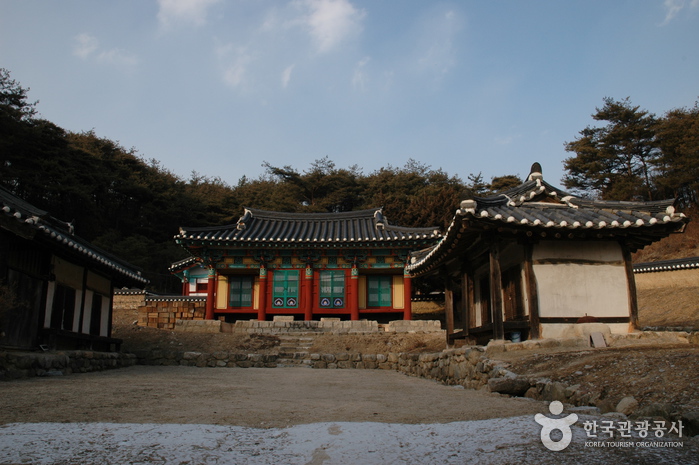
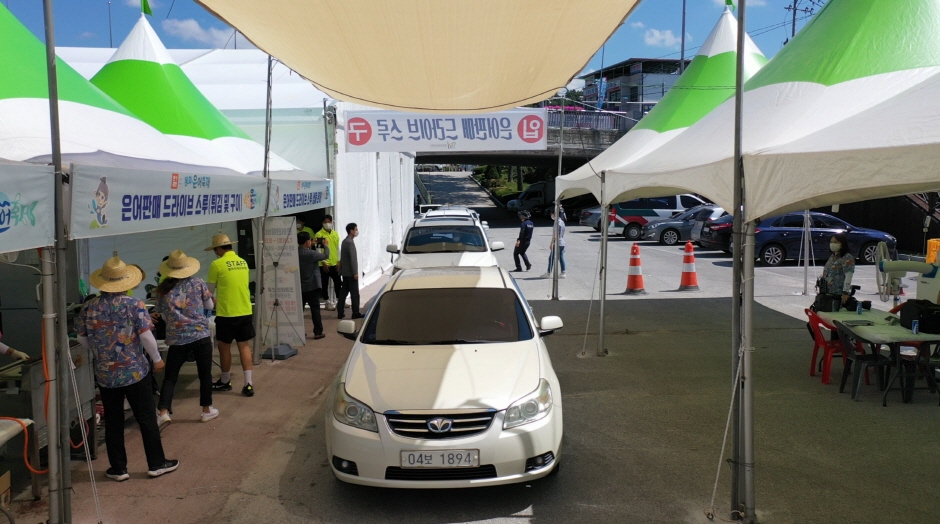
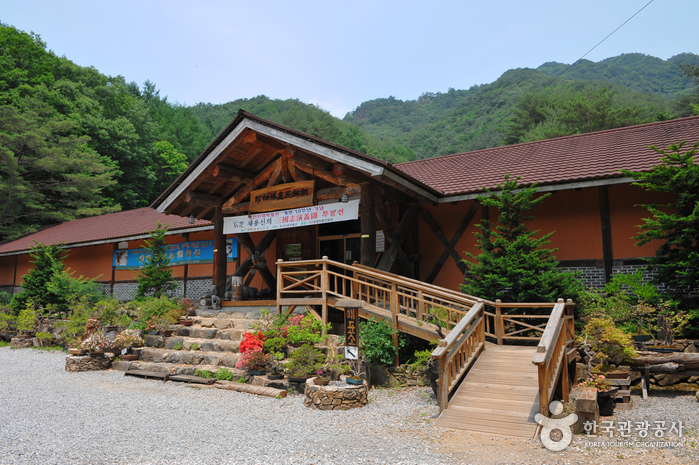
![Be, Bridge Pool Villa Resort (Selene) [Korea Quality] / 비브릿지(셀레네) [한국관광 품질인증/Korea Quality]](http://tong.visitkorea.or.kr/cms/resource/01/2709101_image2_1.jpg)
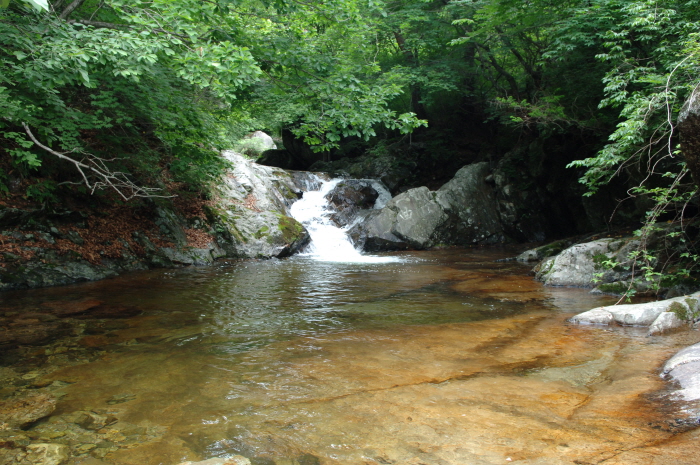
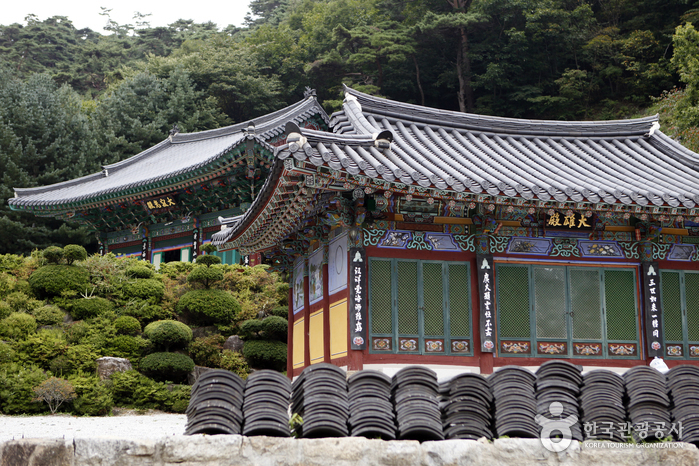
 English
English
 한국어
한국어 日本語
日本語 中文(简体)
中文(简体) Deutsch
Deutsch Français
Français Español
Español Русский
Русский